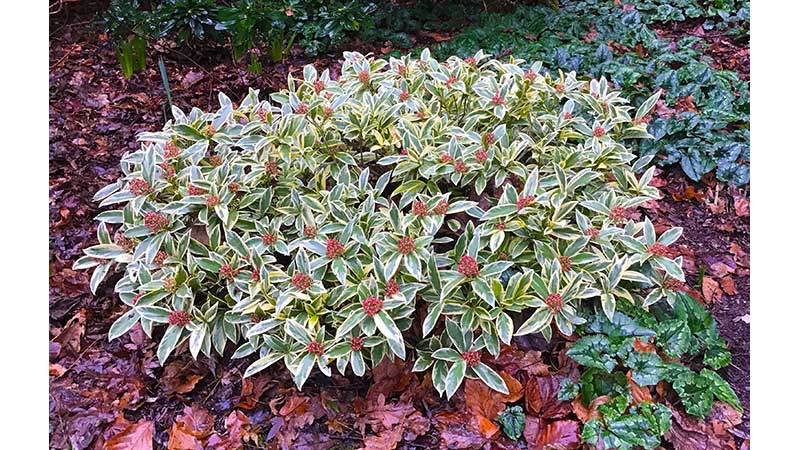Add pops of color to winter gardens
Published 8:28 pm Saturday, February 8, 2020

- Skimmia ‘Magic Marlot’ adds the perfect amount of low-key color and texture to the winter garden.
On New Year’s Day, my gardening mad friends in England sent me photos of their yard, and I was struck by how colorful it was, even in the dead of winter.
Yes, there were bare trees and shrubs, but there was also quite a bit of color tucked away here and there. It gave an overall sense of hope that winter wasn’t altogether bleak and spring would most definitely arrive.
After I recovered from a major attack of jealousy, I went outside to see how my garden compared.
Although I have more than my share of naked trees and shrubs, I was pleasantly surprised to find my own patches of color. January was mild, so many of the hellebores were blooming, providing splashes of pink, deep maroon, white, cream, and yellow. These tough plants are evergreen, deer proof, and ever so easy to grow. Just provide decent soil, partial shade, and perhaps some water during the hottest and driest part of the summer.
Further exploration revealed that many of the early daffodils planted in protected spots near the front porch were blooming too. That old favorite, Rijnveld’s Early Sensation, is always the first to bloom, sometimes as early as late December or January. It’s a two-toned yellow that isn’t particularly flashy, but it’s tough and doesn’t seem to mind snow. Last fall, I planted February Gold daffodils in the same area, and they’re blooming too. They’re the cyclamen type and have long trumpets and recurved petals.
A slow walk around the backyard revealed more color. My ever-trusty Edgeworthia was beginning to bloom. The flowers are yellow and cream and ever so fragrant. On some days, my neighbor enjoys their scent too. And then there is the huge camellia that was here when we bought this old house nearly 30 years ago. It’s planted at the corner of the furnace room and reaches up to the second-floor bathroom window. I don’t know the name of this cultivar, but it’s an old and very tough one. It’s covered with deep, red blooms.
What could I do to add even more winter color to my garden?
Lots. I could plant winterberry (Ilex verticillata), a native holly that has incredible bright-red berries. This holly is deciduous and is available in smaller sizes that work well in most home gardens. I’m going to look for the dwarf Little Goblin cultivars, which only grow to be 3- to 4-feet tall. I could also add a daphne. There are several at Lewis Ginter Botanical Garden that are inspiring. Although daphnes have the reputation of being fickle – fine today, dead tomorrow morning – I’m ready to try one and will probably choose Eternal Fragrance, which has clusters of blush pink flowers that are highly fragrant, even for daphnes. It’s also a small, compact variety that is usually no more than 2-feet tall.
And then there is Skimmia japonica, a new plant for me. My friend in England has Magic Marlot, which may not be available here yet. It’s a dwarf variety that forms a dense domed mound only 2-feet tall. The foliage is green edged with gold, and the flowers are pale pink. It’s stunning.
The winter garden doesn’t have to be dreary. It just needs a few reliable pops of color here and there to remind us that spring will soon be here. Cheers.
Dr. Cynthia Wood is a master gardener who writes two columns for The Farmville Herald. She can be reached at cynthia.crewe23930@gmail.com.





